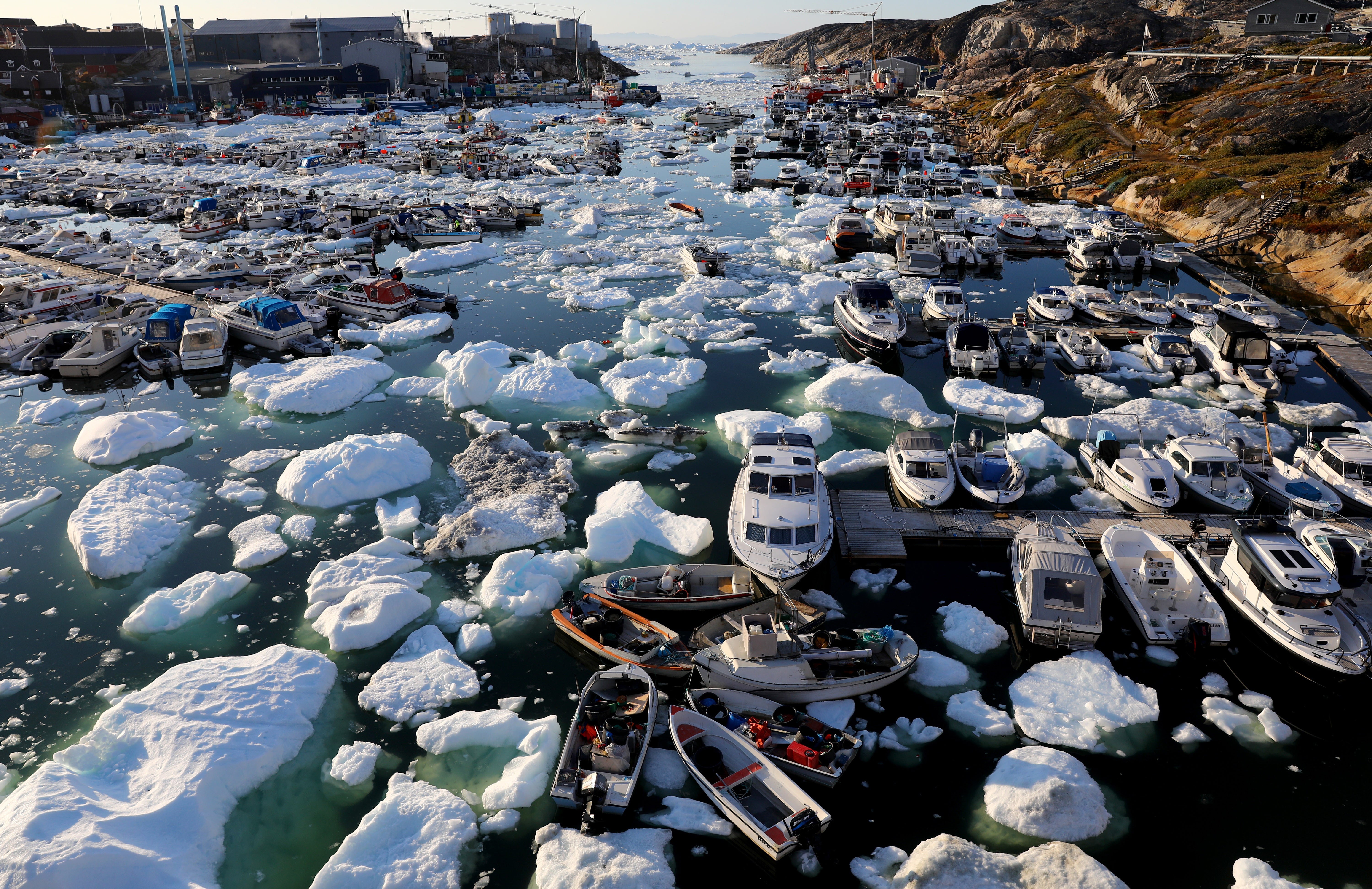
The warming that humans cause today may have ripple effects far into the future, scientists warned in a study yesterday that finds the vast Greenland ice sheet could continue melting for centuries after greenhouse gases are stabilized.
Greenland has a delayed response to changes in the Earth’s climate, and even if the planet stopped warming tomorrow, Greenland may continue losing ice for hundreds or even thousands of years.
The study, published in the journal PLOS One and led by Hu Yang of the Alfred Wegener Institute in Germany, used model simulations to look back thousands of years into Greenland’s history.
Scientists already have a pretty good idea of how the ice sheet has shifted through the millennia, thanks to ancient ice and sediment samples they’ve drilled out of the ice sheet and the surrounding ocean floor. These samples, some of which are many thousands of years old, contain chemical information that can tell scientists how the Earth’s climate has changed through time.
Using this information, the scientists used a climate model to simulate thousands of years of natural climate change. They also used an ice sheet model to evaluate the Greenland ice sheet’s response to the rise and fall of Earth’s temperatures.
They found that Greenland’s response to global climate change has tended to lag, sometimes by thousands of years.
During periods of natural cooling, for instance, the ice sheet has begun to grow—and then it continued to grow for some time even after the climate starts warming again. Eventually, the ice sheet flips and starts to shrink again. Then it continues shrinking even after temperatures stop rising.
That’s because the Greenland ice sheet is such a large, complex system.
The ice sheet loses mass when ice begins to melt or break away in chunks into the ocean. But it also gains mass as snow falls and accumulates on the surface. The balance between these two processes controls whether the ice sheet is shrinking or growing at any given point in time.
Even if ice begins to melt as the climate warms, it doesn’t always happen fast enough to immediately outweigh the amount of mass the ice sheet is gaining back. It can take time.
At the same time, the ice sheet is so large that once it starts losing ice at faster and faster speeds, it can take a long time to slow back down again.
The study finds that this lagging process has gone on, intermittently, for tens of thousands of years.
And it appears to be continuing in the age of human-caused climate change.
The Earth’s climate has been warming for at least a century, driven by increasing human emissions of greenhouse gases. But multiple studies have found that the Greenland ice sheet didn’t start shrinking until around the 1980s.
Since then, it’s been losing ice at faster and faster speeds. Recent research has found that the Greenland ice sheet is currently losing about seven times more ice than it was in the 1990s.
That doesn’t mean immediate climate action doesn’t make a difference for the Greenland ice sheet.
On the contrary, studies suggest that the speed at which Greenland melts in the future depends heavily on how quickly humans manage to curb global warming. Even if some melting is locked in for the future, the losses would be far faster under more severe warming scenarios.
That’s true not only for the Greenland ice sheet, but for the Earth’s other frozen places as well. One recent study, published last May in Nature, used models to simulate the amount of future ice melt under different potential climate scenarios.
If the Earth were to warm by around 3 degrees Celsius between now and the end of the century—a likely scenario under current global climate policies and commitments to the Paris climate agreement—then all the global ice melt combined would probably contribute about 10 inches of sea-level rise.
Meeting the Paris Agreement’s most ambitious targets, on the other hand—that is, keeping global warming within 1.5 degrees Celsius—would make a tremendous impact. It would cut those sea-level contributions in half.
Reprinted from E&E News with permission from POLITICO, LLC. Copyright 2022. E&E News provides essential news for energy and environment professionals.
